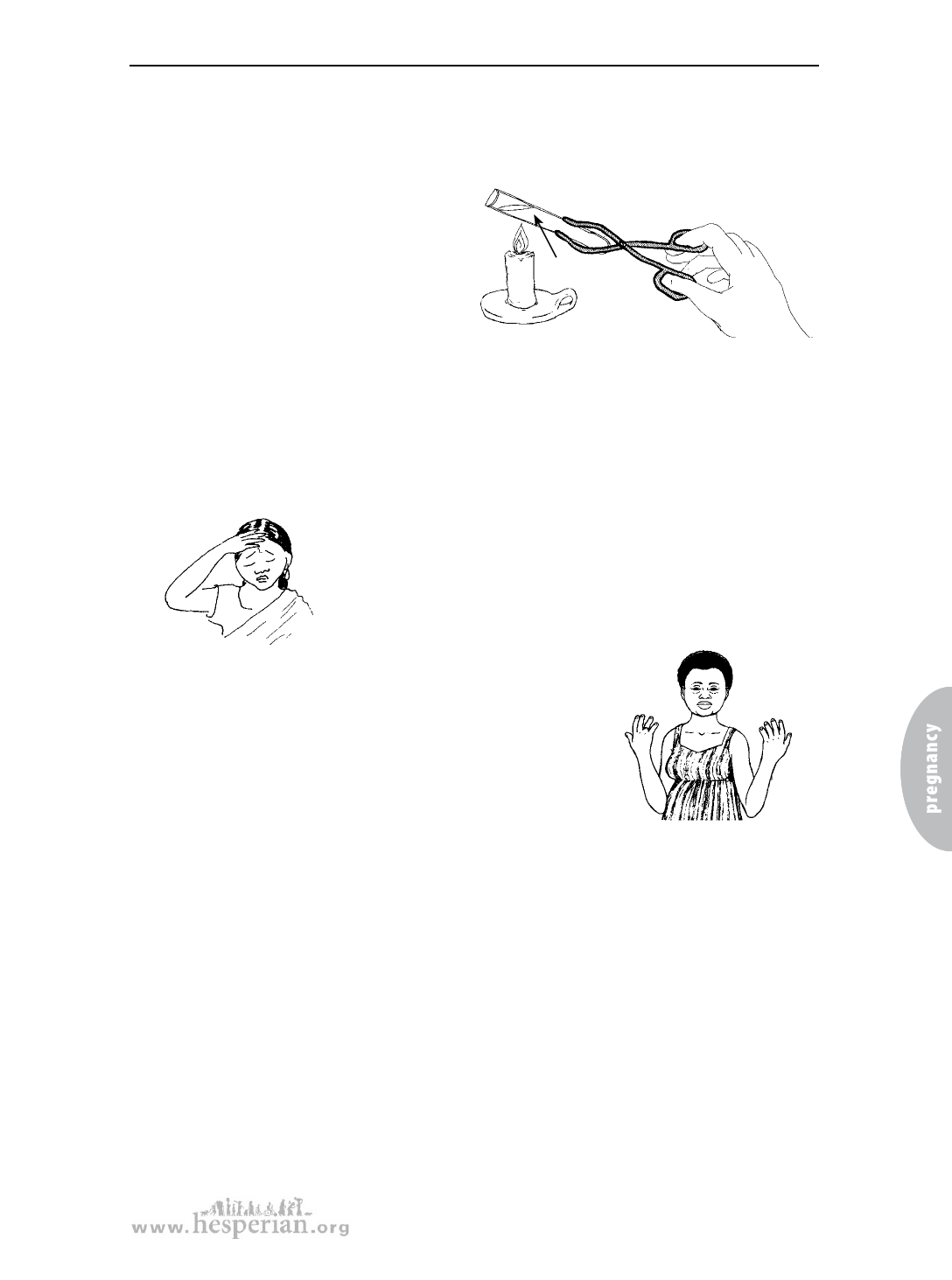
Check the mother’s body
Method 2: Heat the mother’s urine to check for protein.
Ask the mother to wash her genitals well and then urinate into a clean
container. Then pour the urine into a test tube to within 2≤ centimeters
(or one inch) of the top of the
tube. Heat the upper part of the
tube over a small burner, low
flame, or candle until the urine
boils. (Keep turning the test tube
urine
or the glass will break.)
If the urine is clear, there is no
protein in it. If the urine becomes
Heating urine to
test for protein
cloudy and white, add a few drops of vinegar (2% acetic acid). If the
cloudiness goes away there is no protein in the urine. If it stays cloudy or
gets whiter, there is protein in the urine. If the woman has protein and
high blood pressure, she has pre-eclampsia. When a woman has severe
pre-eclampsia, the urine may become very cloudy, white, and thick.
3. Ask the mother if she has had any headaches, dizziness,
or trouble seeing.
If these problems are severe or happen often, especially
if they start in the last 3 months of pregnancy, they can
be signs of pre-eclampsia.
4. Check for swelling. Swelling is also called water
weight, water retention, or edema.
Swelling is common during pregnancy, and it is not
usually a serious warning sign. Swelling is normal
when it is on the ankles and feet, and when it goes
away after the woman rests with her feet up. If the
woman is having swelling, she should drink plenty
of water, take more breaks during the day, and put her feet up when she can.
Swelling can be a sign of pre-eclampsia if:
• the woman’s hands or face are puffy or swollen and
• the woman has swelling when she first wakes up in the morning
What to do if you find warning signs
If a mother has warning signs, get medical help (even if the birth is several
months away). It may be safer for her to give birth in a medical center. If you must
do the birth at home, be prepared for problems. Read the sections on bleeding
(see page 224), convulsions (page 181), and small babies (page 221).
If the mother is told to rest at home, encourage her to follow the instructions
for home care for high blood pressure on page 124.
A Book for Midwives (2010)
127